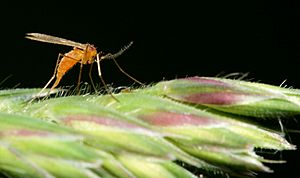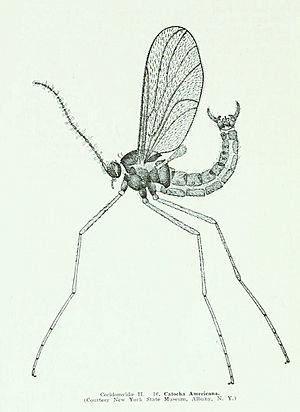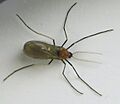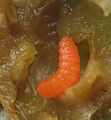Cecidomyiidae facts for kids
Quick facts for kids Cecidomyiidae |
|
|---|---|
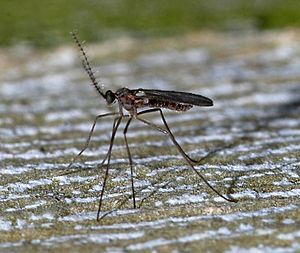 |
|
| Scientific classification |
|
| Kingdom: | Animalia |
| Phylum: | Arthropoda |
| Class: | Insecta |
| Order: | Diptera |
| Suborder: | Nematocera |
| Infraorder: | Bibionomorpha |
| Superfamily: | Sciaroidea |
| Family: | Cecidomyiidae Newman, 1835 |
| Subfamilies | |
|
|
| Synonyms | |
|
|
Gall midges (scientific name: Cecidomyiidae) are a family of tiny flies. They are also sometimes called gall gnats. These insects are known for their special way of life. The young forms, called larvae, often live inside plants. They cause the plant to grow unusual bumps or swellings called galls.
Gall midges are usually very small and delicate. Most are only about 2 to 3 millimeters (0.08 to 0.12 inches) long. Some are even smaller, less than 1 millimeter (0.04 inches)! They have fuzzy, hairy wings, which is quite unusual for flies. They also have long antennae.
A very strange thing about some gall midges is that their larvae can reproduce before they even become adult flies. This is called paedogenesis. In some cases, the baby larvae even eat their mother! In other types, the reproduction happens when they are still eggs or pupae.
Scientists have found over 6,000 different kinds of gall midges around the world. However, they believe there are many, many more. Some studies suggest there could be over 1 million different species! This would make them one of the largest families of animals on Earth.
Contents
What Do Gall Midges Look Like?
Gall midges are tiny flies, usually between 0.5 and 3.0 millimeters long. Some can be a bit bigger, up to 8 millimeters. They look very delicate.
- Eyes and Mouth: Most gall midges have very large eyes that meet at the top of their head. Their mouthparts are very small.
- Antennae: Their antennae are quite long. They can have many segments, sometimes up to 40! These segments often have rings of hairs or special sensory parts that help them feel their surroundings.
- Wings: Their wings are usually clear and can have tiny hairs or scales. They don't have many strong veins in their wings compared to other flies.
- Legs: Their legs are long and thin.
The young forms, or larvae, are also very small. They have tiny, cone-shaped heads and small antennae. They often have a special hard plate on their chest area.
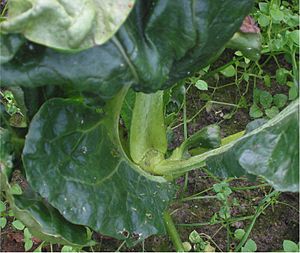
Gall Midges: Pests or Helpers?
Some gall midges can be a big problem for farmers because they damage crops. But others are actually helpful because they eat other pests!
Gall Midges as Pests
Many gall midge species are known as pests. They can cause a lot of damage to plants, especially when their larvae create galls.
- The Hessian fly is a famous example. It attacks wheat plants, and the galls it causes can severely harm the crop.
- Other important pests include the wheat blossom midge, the Asian rice gall midge, and the African rice gall midge. These can damage important grain crops like rice and millet.
- Other types of gall midges can harm coffee flowers, soybean pods, pine needles, lentils, alfalfa, pears, and raspberry canes. They can also affect vegetables like rutabaga and cabbage.
Gall Midges as Biological Control
Even though some gall midges are pests, many others are actually helpful! Their larvae are predators, meaning they hunt and eat other insects. Some are also parasitic, living on or in other creatures.
- They often eat common garden pests like aphids (tiny sap-sucking insects) and spider mites.
- They can also prey on scale insects, whiteflies, and thrips.
- Since gall midge larvae can't move very far, they usually appear when there are a lot of other pests around.
- One species, Aphidoletes aphidimyza, is very important in biological control programs. It's often used in greenhouses to control aphids and is sold widely to farmers.
- In South Africa, a gall midge called Dasineura rubiformis is used to control invasive Acacia trees from Australia.
Images for kids
-
Asphondylia solidaginis pupa inside a gall on a goldenrod plant.
See also
 In Spanish: Cecidómidos para niños
In Spanish: Cecidómidos para niños


